What is the Best pH Hydroponics: How to Set And Maintain Levels

This post follows our research editorial guidelines.

Hydroponics lends itself to the scientific and technically-minded grower because there’s a lot of data to track. One of the most important of these is the acidity of your solution, measured as pH. It can be the difference between a thriving garden and a bunch of sad stunted stems. It’s a lot easier to get a grip on than you’d think!
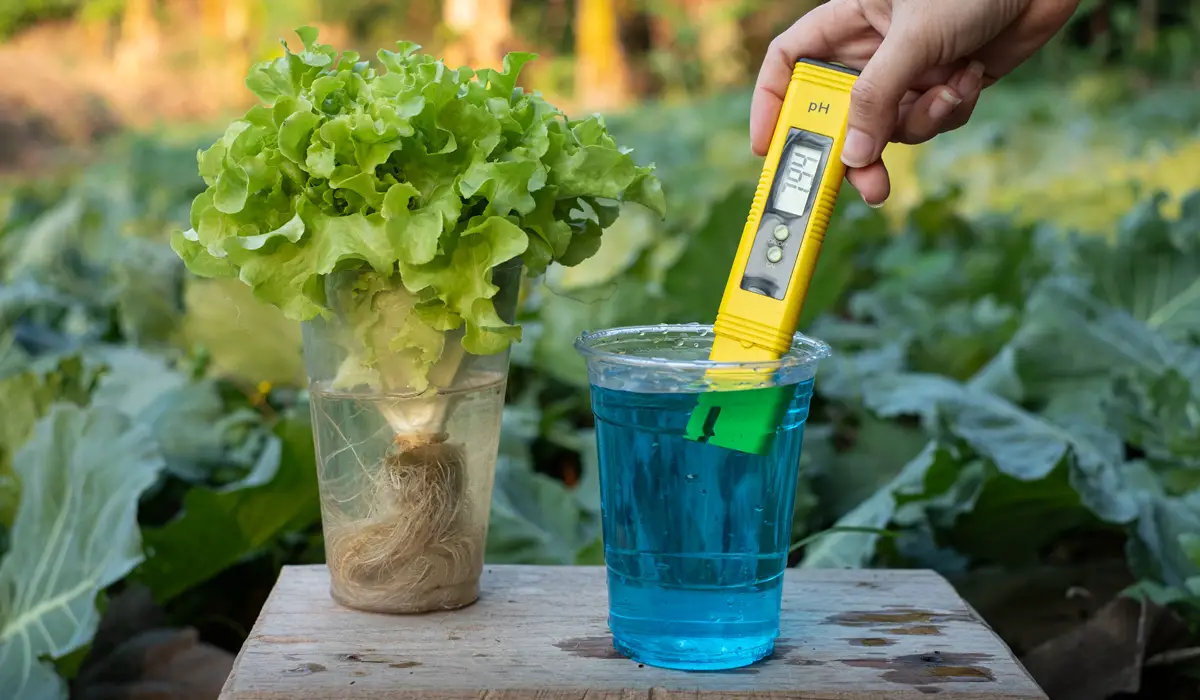
What Is The Best pH For Hydroponics?
The best pH for most hydroponic plants is neutral to mildly acidic pH (5.5-6.5). This will ensure that plants are able uptake the nutrients required for optimal growth. The scale of water pH reflects its reactivity by describing the amount of free hydrogen ions.
What does pH Stand For?
We use pH to measure the acidity of the growing solutions we use in hydroponics. The H in pH stands for ‘hydrogen’. They form a positively charged particle called an ‘ion’ that interacts with other things in the solution. A high pH substance has a lot of free hydrogen ions swimming about in it. A low pH substance has fewer.
Remarkably, the scientist who first described pH never outright said what the ‘p’ in pH stands for. Generally, it’s understood to mean ‘power’ or ‘potential’.
The number itself is a logarithm, meaning each is ten times the value of the one before. A substance with a pH of 5 had ten times the reactive hydrogen in it than one with a pH of 6. It means a small change in the reading actually represents a fairly substantial change in the nature of the solution. You really need to watch those decimals!
Why Is pH Important For Hydroponics?
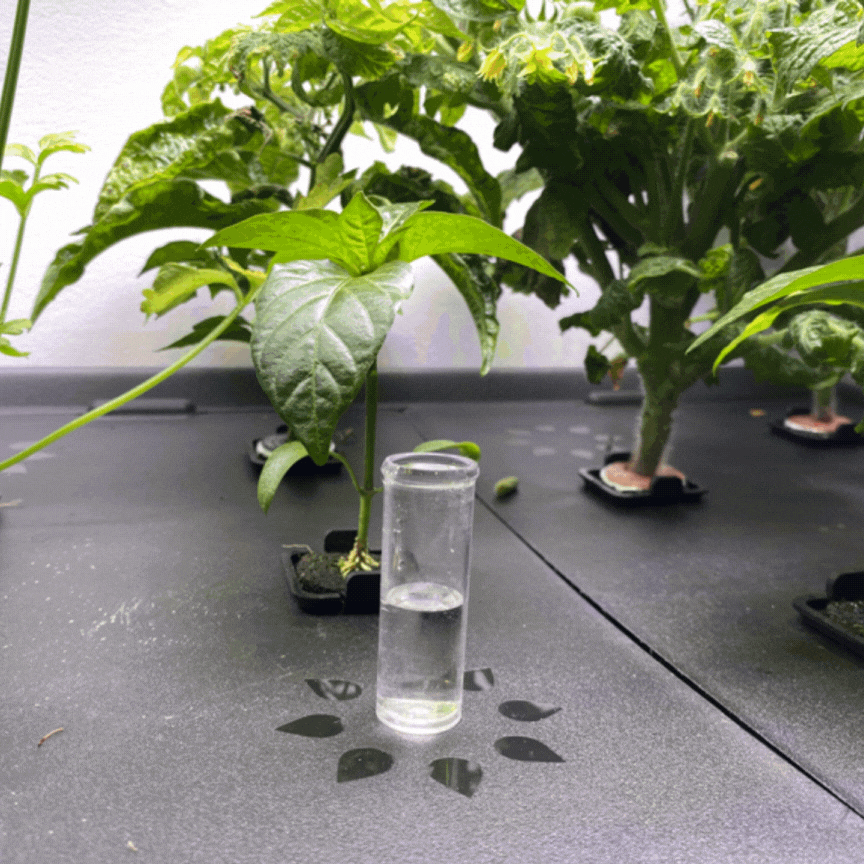
The pH of our solution gives us a glimpse into the invisible work of the chemicals we add to it. Given our crops are entirely dependent on that solution it’s good info to have!
No matter what recipe you use the essential nutrients for your hydroponic solution come from mineral salts. This means that chemically they have one part that’s a metal, and one part that’s not. Each part has a mild electrical charge that helps bind them together.
Common table salt is the one most of us think of when we hear the word ‘salts’. It’s made of the metal sodium and the gas chlorine. Sodium has a positive charge and chlorine has a mild negative charge. Opposite charges attract, and so the two elements bind quite comfortably together.
Fertilizers and supplements follow the same general formula. For example, nitrogen in our hydroponic systems generally comes from nitrates. The most common are salts of potassium, calcium or magnesium.
When added to water these ingredients separate into forms of nitrogen that can be taken up and used for growth. The metal also forms a charged particle of its own. Ions of calcium, magnesium, and potassium contribute to a bunch of different biological functions in plants. It’s all useful in its own way.
The hydrogen ions in the solution interact with the salts. They break them down and get them moving through the solution. Other times it helps it form new molecules with other components in the mix.
The pH lets us know how the ions in the solution will behave once you start adding your salts and how the plants themselves will respond too.
Acidic vs Neutral vs Alkaline pH
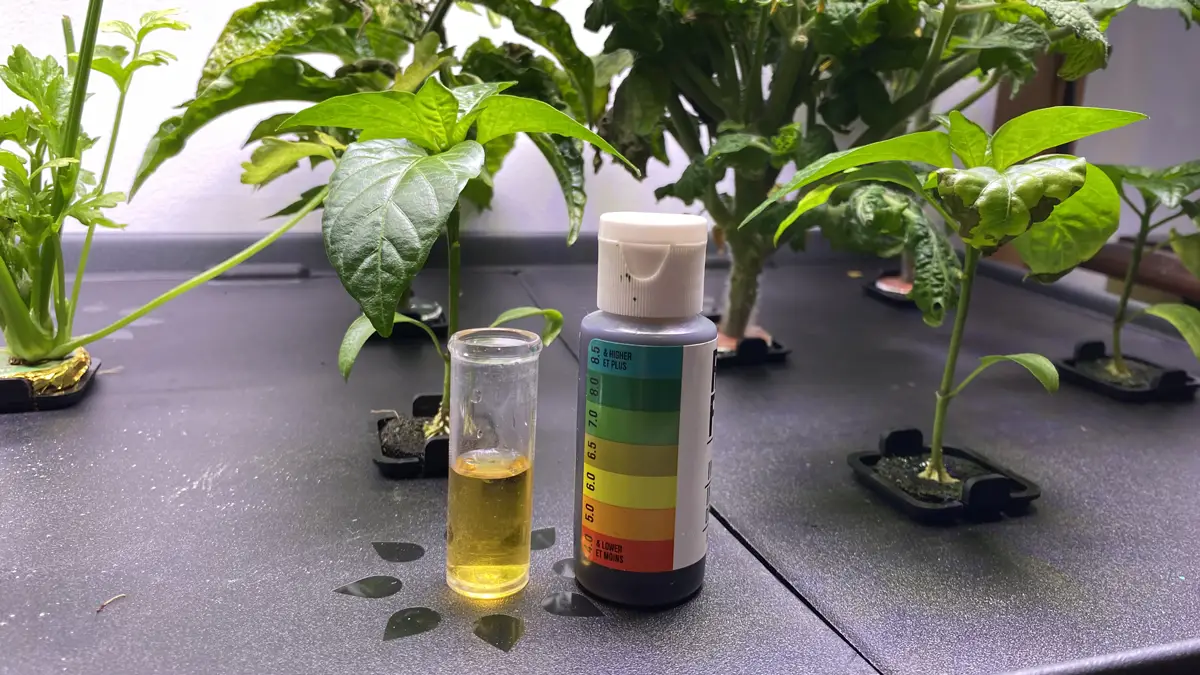
We measure pH as a number ranging from 0-14 or thereabouts. The lower the number the more acidic, and the higher the more alkaline.
Acidic substances have a low pH, between 0 and about 6. There’s not a lot of free hydrogen to bind to other parts of the solution. Instead, the salts move about freely and bind to whatever else they can find.
Plant roots by and large have their own mild negative charge to help them draw nutrients to them in soil. In a hydroponics system, without the charge of the hydrogen keeping them back the salts flood into the roots. The tissue becomes overwhelmed or begins to break down entirely.
On the other hand, when the pH is too high there are lots of hydrogen ions swimming around in the solution. Their charge is too powerful for the roots to overcome. Minerals are drawn to hydrogen instead and bind with it to form new compounds.
In our hydro setup the hydrogen locks up the useful parts of the salts. It also actively tears at the roots, stealing away compounds already inside. If you’ve ever seen drain cleaner tear through a clog you have an idea how destructive an alkaline substance can be.
When the pH is neutral, the salts in the solution don’t really do much beyond dissolve. They are readily available for uptake by plants. Their roots can draw the nutrients they need right more or less as needed.
“A pH of 5.4 to 6.2 will allow fertilizer nutrients to be available for plant growth for most plants. However, each plant has its own optimal range for growth.”
Thomas A. Dudek, Michigan State University Extension Officer
Plants that do well in acidic conditions
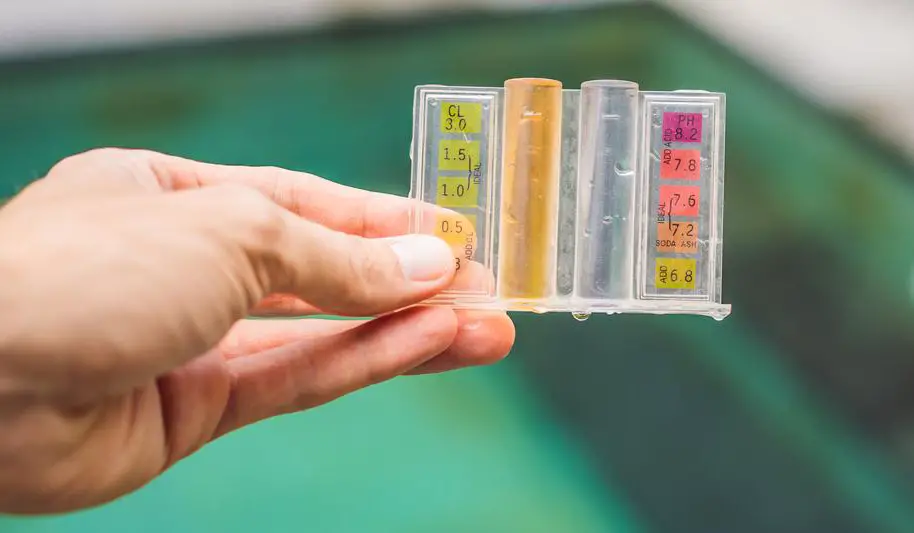
Most plants do well with mildly acidic conditions. It keeps the nutrients moving, preventing them from becoming locked up but preventing the roots becoming overwhelmed. Many fungi and other nasties struggle at lower pH, so you can protect your roots from disease with a mindful control of acidity.
In general, a pH of between 5.5 and 6.5 is a good choice. Most plants in hydro will do very well around that point. If you’re planting a variety of different crops a mildly acidic solution will keep them all happy enough.
Basil
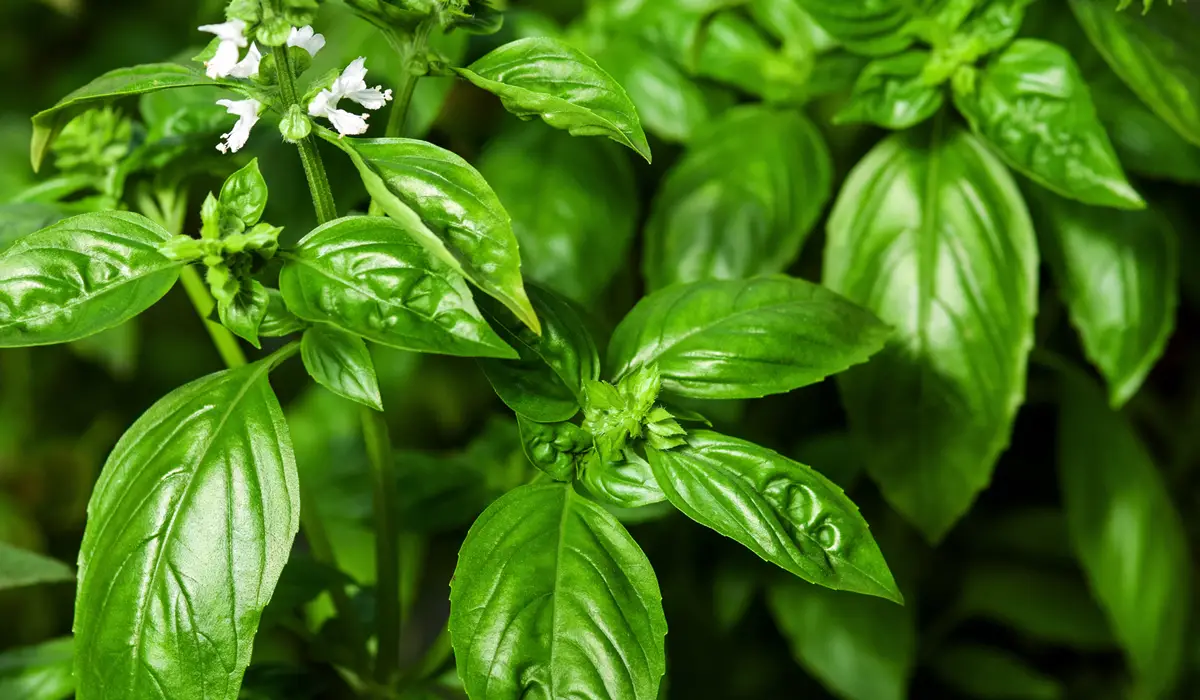
Remarkably, basil thrives in quite acidic conditions. They’ll keep chugging along quite happily at a pH as low as 4. It’s far lower than almost all plants and makes basil far more resistant to root diseases than most.
While they love a bit of acid, hydroponic basil does best at between pH 5.5 and 6. Given they’re a warm water crop that needs tepid nutrients a bit of acid is good insurance against disease.
Blueberries
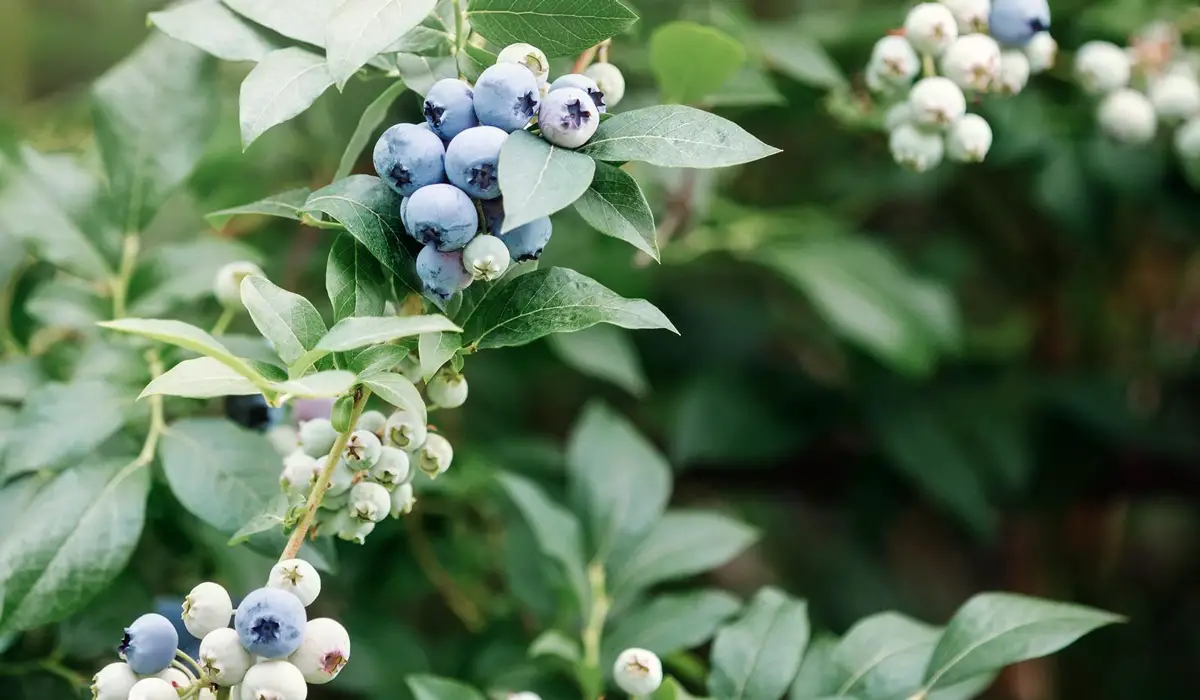
Hydroponic blueberries are another crop that loves acidic soils. Commercial growers keep their greenhouse bushes in a soil free medium that’s at a pH between 4.2 and 5.5. They’re prone to nutritional deficiencies or damage if their medium slips out of that range. Watch for salt burns and dieback of young leaves as this indicates your pH is off.
Peppers
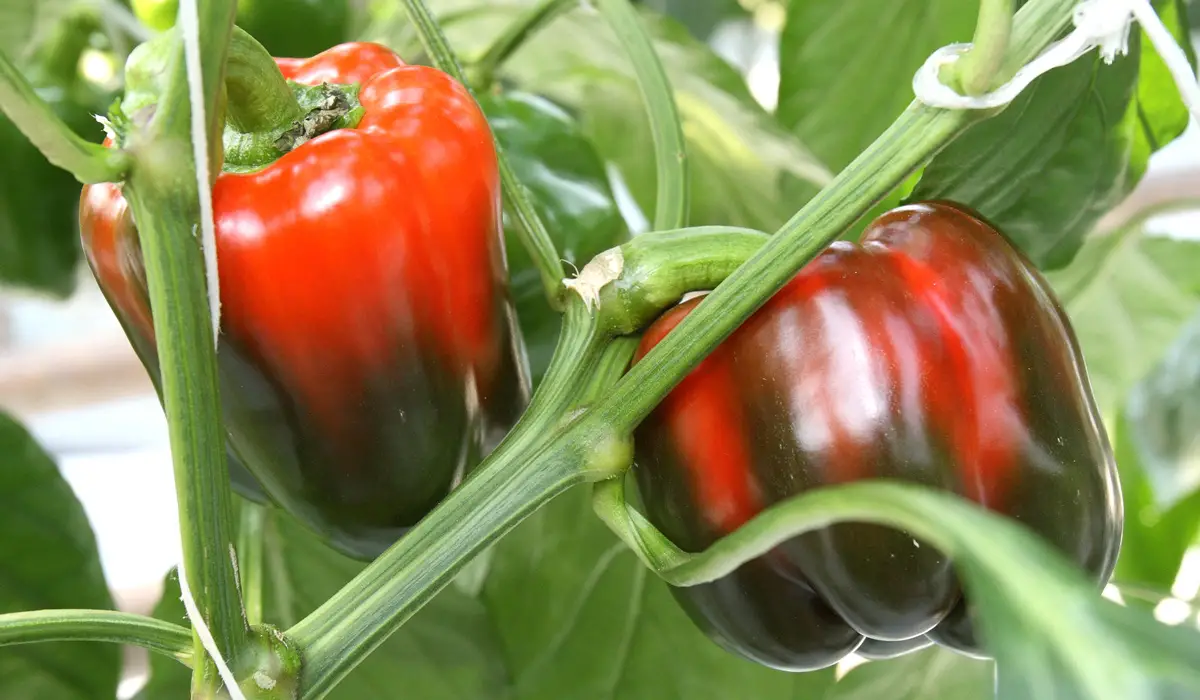
I really do love growing peppers in hydroponics indoors. One of the things that makes them so rewarding to grow is how disease-resistant their acid-loving roots can be. Hydroponic peppers prefer a pH of between 5.5 and 6 but will also grow quite well in an acidic solution that has a pH of 4.5
Can plants do well in alkaline conditions?
Very few plants do well in alkaline conditions. It limits the availability of micro-nutrients in the soil, especially metals like iron or zinc.
But that’s not to say all plants need acid. Many species evolved to thrive in harsh, alkaline soils. Herbs like rosemary, mint and marjoram do well in alkaline garden beds. Leeks and asparagus also need alkaline soils to thrive.
But all bets are off once you get them into hydroponics. This is because many plants produce their own acids close to the roots in response to alkaline conditions. They still have a need for acid soils, they just make them acid themselves!
If you want to grow an alkaline-friendly crop like rosemary or asparagus, it’s best to keep their nutrient solution at a neutral pH of around 7. This will provide them with the nutrients they need without prompting them to go too crazy with acids of their own.
How to measure pH levels in hydroponics
The easiest way to test pH levels in hydroponics is with dip strips. They’re also known as Litmus tests and they’re readily available online. They can just be up and dunked straight into a sample of the solution. Inelegant? Yes. Effective? Also, yes!
If you want a more precise measure of the pH in your system, an electric pH monitor is far better. A wand or pen style is as easy to use as a dip strip but will give a far more accurate result. You can also opt for meters that remain in the system and allow for continuous real-time information. They give you an exact measurement with those all-important decimals rather than just a window like a strip would.
Most electrical meters will need to be calibrated before use and re-calibrated regularly. How you do this will depend on the brand used, so be sure to follow any included instructions carefully.
How Often should you be checking pH levels
Generally, it’s a good idea to check your pH daily when you’re starting out. It doesn’t take much for your levels to get out of whack and start damaging your plants.
If you have erratic weather or plants that are struggling you can learn a lot by testing over the course of the day too. Changes in the pH can follow predictable patterns that tip off what’s causing them.
If you’re using a Deep Water Culture system of some sort you can test a sample taken from your reservoir. For circulating systems like ebb and flow or drip it’s more accurate to test the water leaving the system. It’ll give you a better reflection of what’s going on in your medium.
How To Adjust hydroponic pH levels
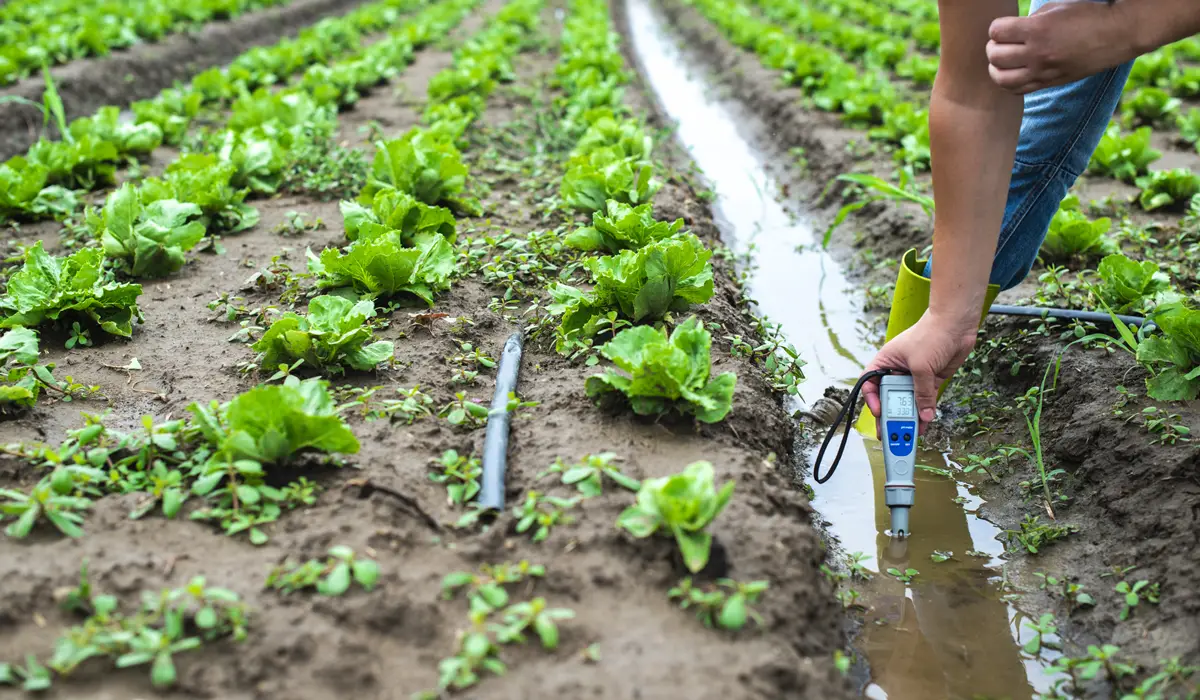
If your pH has fallen out of whack, you’ll generally need to add a buffer solution. These are liquids that have either an acidic or an alkaline pH profile of their own and can help bring the range back into an acceptable window.
An acid buffer is usually a phosphoric acid of some sort. They’re often simply marketed as pH Up or the like. For small-volume systems even a natural acid like white vinegar will do. An alkaline buffer is generally made from potassium hydroxide or potassium carbonate and is also available in commercial blends that are easy to use.
Most will have instructions on how to dilute them into your solution correctly on the packaging. No matter what you opt to use always add them to your solution slowly and monitor the changes in pH as you go. It’s far better to take a while and use the right amount than to rush it and have to start over.
Why does my Hydroponic Water pH keep changing?
There are a few different factors that can cause the pH to change.
One is dehydration. If you’re losing a lot of water to evaporation, both via the leaves of your plants and through open tanks or troughs, the nutrients become denser.
Those hydrogen molecules become more concentrated and the pH will shift.
Your solution’s composition can have an impact too – nitrogen from nitrates can turn a solution alkaline, and ones from ammonium based sources can increase the acidity.
Algae living in reservoir tanks and piping on the other hand will result in a daily cycle of rising pH in the morning that drops off in the evening. Algae are plants too, and their biological activity over the day changes the pH in cycles that match their photosynthesis and respiration.
You may also find your pH shoots all over the place with the addition of new plants and new inorganic material. Rockwool is notorious for messing with pH levels, and some gravels can act as buffers that cause pH to rise gradually.
Test a few times through the day and you may find the cause. If you just adjust once a day and move on, you miss the opportunity to fix the issue permanently.
At what pH is nitrogen most available in hydroponics?
Nitrogen is most available in hydroponics when the pH is close to a neutral 7. But there’s more to the story to that.
It’s important to consider what kind of plant you’re growing before you start tinkering with your pH. What results in good nitrogen availability for one plant may result in root stress for another.
Most hydroponics setups will do best at a mildly acidic pH. This gives the best access to nitrogen and other nutrients. It also creates an environment that’s hostile to fungi and other pathogens that can set up camp in your roots and cause real problems.
Final thoughts
I personally find the chemistry behind pH to be fascinating. Imagine the dance of those molecules in perpetual motion! Working out the best way to blend my solution to take advantage of that dance is one of the nerdier joys of indoor hydroponic gardening. Maybe I should have been a chemist!
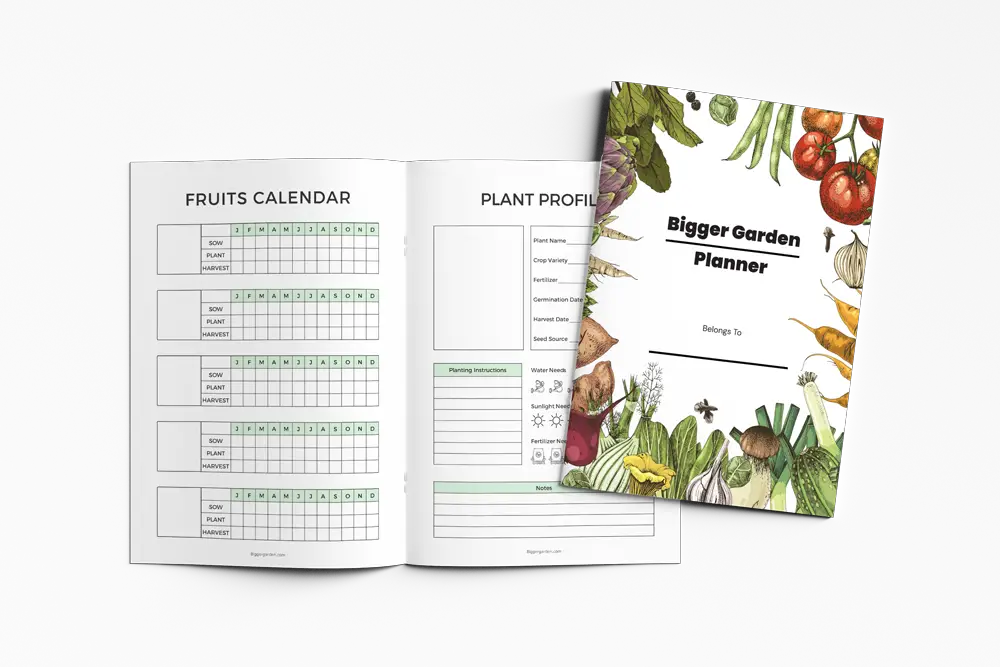
Before you go!
How to Grow Hydroponic Plants with Coco Coir? Choosing The Best type
How to Set Up a Nutrient Film Technique (NFT) Hydroponic System?
Clean and Sanitize your AeroGarden for Hydroponic growing
The Secret to Growing The Best Hydroponic Broccoli